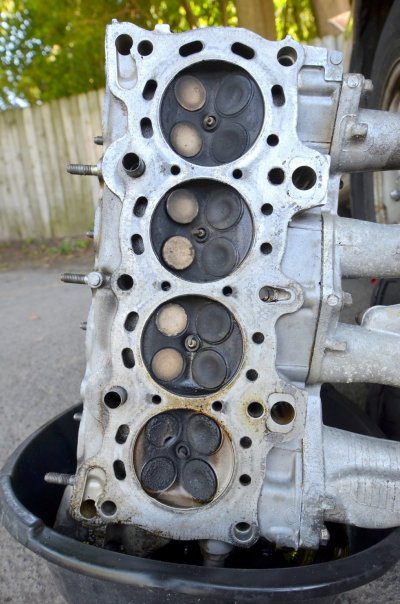Coolant does go down slowly in tank, perhaps 1/4” down a month.
Greetings wvukidsdoc,
Just the fact that you can tell me exactly how much coolant is consumed each month tells me volumes.
When a vehicle owner can tell me with confidence what kind of MPG vs usage, plus how many miles per
quart of oil, and finally how much coolant is being consumed, now *this* is a person who will not only
appreciate good work, but will take care of that same work, whether they use the wallet wrench or fix
it themselves.
****
Re: Using ebay parts on your machine. A handful of years ago, I was down to a single vehicle, and
I managed to burn one of the exhaust valves on my then DD. (A D15b in a '90 Civic hatchback) Simply
stated, if the car wasn't running, then I was walking. And I had a job with an inflexible schedule that
I had to get to. Paying a garage to do this would cost more than the 28 year old vehicle was worth.
Plus having to rent a car while it was in the shop. And the only solution that allowed me to fix the car
and not run afoul of this schedule was to have a rebuilt/remachined cylinder head in hand so that I
could swap it on in less than a day.
So after a bit of searching I found a small machine shop on ebay who had lots of positive feedback, and
the way they described their work had the ring of truth. Nothing exotic, just solid work. So I bought
the head (see attached) got a set of good gaskets, a fresh timing belt, etc., and on my next day off I
got it done. And my DD was back online running on all 4 cylinders. Felt like I had 2 engines under the
hood compared to chugging down the road on 3.
Point is, I checked the valve seal by pouring rubbing alcohol into the ports and ensuring that nothing
leaked past the closed valves. The little hatchback ran like brand new, all the way to the point where
I traded it in for my current DD.
****
The point I'm trying to make is that if you give those ebay heads a careful inspection there's a very good
chance that you will end up with a smooth-running big block that uses zero coolant. And if you are so
inclined, you can now remachine your original heads without having that 'gotta get this back together asap'
time pressure on your shoulders. My default nature is to minimize risk when it comes to mechanical stuff...
but sometimes you just have to make the best of what you have to work with.
And by all means make a Build Thread of your big block GMT400 and take sharp pics, and in turn I can promise
that I will be pouring over them, living vicariously through your experience. :0)
Best of luck. And Welcome to the forum.
Cheers --
Attachments
Last edited:



